| EQUILIBRIUM OF THE AGGREGATE SUPPLY AND DEMAND CURVES | |
The Aggregate Demand model can be used to show the point of full employment or full productive capacity. On the model this is drawn as a straight line and labled Yf - the point of full employment, where all resources are being used. |
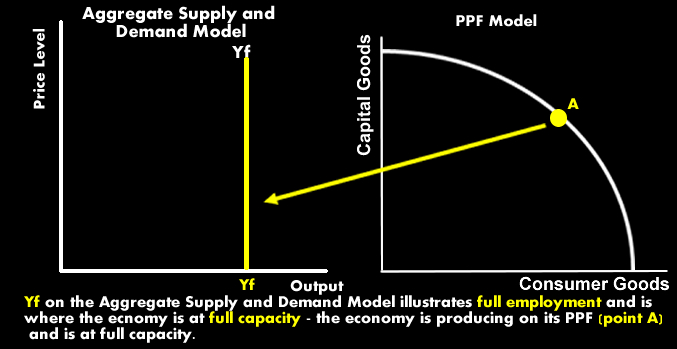 |
| EQUILIBRIUM POINT | |
Where the Aggregate Demand is equal to Aggregate Supply is the point of equlibrium for the economy. At this point the avergae price level - or the rate of inflation is PLe and the level of incoem / employment and output (GDP) in the economy is Ye. |
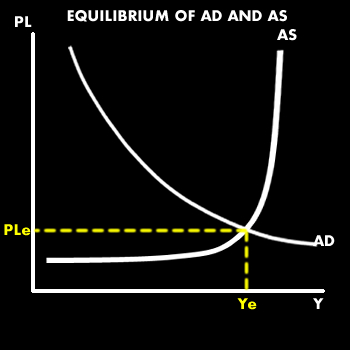 |
| EQUILIBRIUM POINT WITH FULL EMPLOYMENT LINE. | |
Recessionary Gap When AD = AS at the equilibrium point and this falls below the full employment line (Yf) then the economy is producing inside its PPF and there will be excess capacity or unemployed resources. This gap between full employment (Yf) and the equilibrium of AD and AS is known as a recessionary gap. |
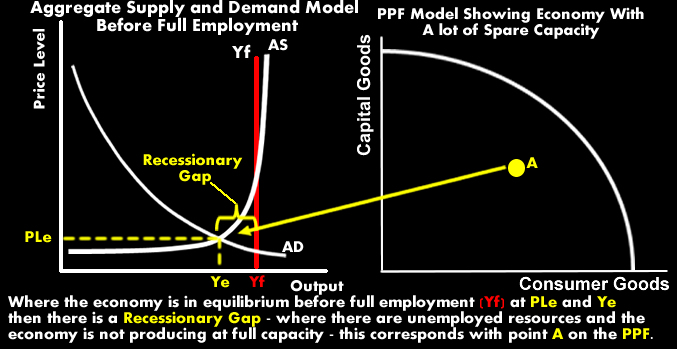 |
Inflationary Gap When AD = AS at the equilibrium point and this falls beyond or after the full employment line (Yf) then the economy is producing on its PPF and the economy is at full capacity or and has no or little unemployed resources. This gap between full employment (Yf) and the equilibrium of AD and AS is known as an inflationary gap. For a short time the economy can produce at this point, because there is a lag between the increase in output and the eventual increase in resource costs that will lead to an increase in the average price level or inflation. |
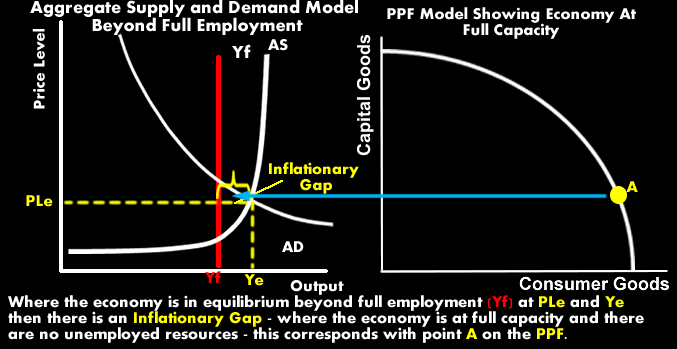 |
| SHIFTS IN THE AGGREGATE SUPPLY CURVE | |
A shift to the right of the Aggregate Supply curve can be caused by changes in - a fall in nominal wages. - a decrease in government indirect taxes, such as GST. As a result of an increase in AS - The average price level will fall - the rate of inflation will fall. - Output will increase - there will be a rise in GDP. |
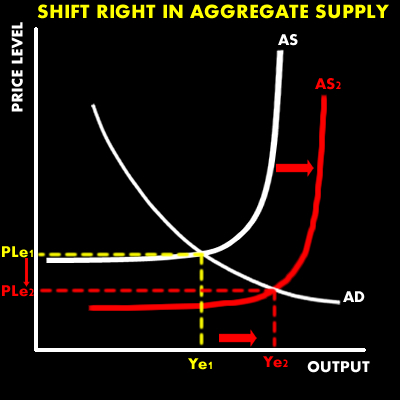 |
| A SHIFT TO THE LEFT OF THE AGGREGATE SUPPLY CURVE | |
A shift to the left of the Aggregate Supply curve can be caused by changes in - an increase in nominal wages. - an increase in government indirect taxes, such as GST. As a result of a decrease in AS - The average price level will increase - the rate of inflation will increase. - Output will decrease - there will be a fall in GDP. |
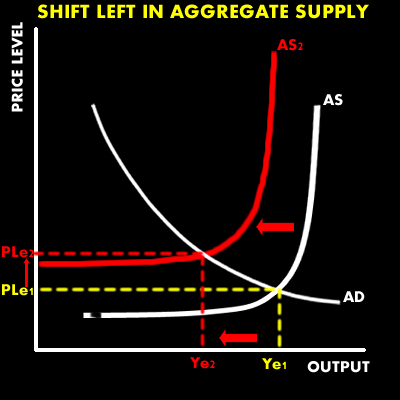 |
| A SHIFT TO THE RIGHT OF THE AGGREGATE DEMAND CURVE | |
A shift to the right of the Aggregate Demand curve can be caused by changes in Consumption - increased consumption caused by changes in things like - household incomes, consumer confidence, decreased interest rates. Investment - increased investment caused by changes in things like producer profits, producer confidence, decreased intrest rates. Government Spending - increased spending on public and private goods and services by the government. Exports - increased export receipts caused by things like - increased demand for NZ exports, depreciation of the NZ dollar. Imports - decreased import payments caused by things such as - a decreased demand for imported goods by NZ, depreciation of the NZ dollar. As a result of an increase in AD - The average price level will increase - the rate of inflation will increase. - Output will increase - there will be a rise in GDP. |
 |
| A SHIFT TO THE LEFT OF THE AGGREGATE DEMAND CURVE | |
A shift to the left of the Aggregate Demand curve can be caused by changes in Consumption - decreased consumption caused by changes in things like - household incomes, consumer confidence, increased interest rates. Investment - decreased investment caused by changes in things like producer profits, producer confidence, increased intrest rates. Government Spending - decreased spending on public and private goods and services by the government. Exports - decreased export receipts caused by things like - decreased demand for NZ exports, appreciation of the NZ dollar. Imports - increased import payments caused by things such as - an increased demand for imported goods by NZ, appreciation of the NZ dollar. As a result of a decrease in AD - The average price level will decrease - the rate of inflation will decrease. - Output will decrease - there will be a fall in GDP. |
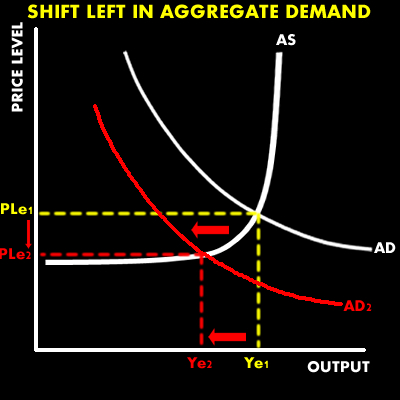 |